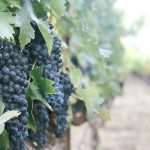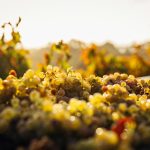The new Clare Valley Wine & Grape Association has released its first draft strategic plan, following a series of member surveys and public consultation meetings in November.
The Association’s independent chairman, Stuart McNab says the strategic plan focusses heavily on better telling the region’s ‘red wine story’ while setting ambitious targets to improve water security and pricing, attract more wine tourists, particularly ‘high value travellers’, and work with education providers to build better local skills and pathways from school to the wine and grape industry.
But it’s the ‘secret’ of red wine which the Association recognises must be better told.
“While famous for 1034-hectares of world-class Riesling, our region, in fact, has significantly more Shiraz (1834ha) and Cabernet Sauvignon (1171ha) vineyards – and many famous brands and red wines. Together these three varietals comprise almost 80% of Clare Valley’s wine production,” Mr McNab says.
“The over representation in Langton’s ‘exceptional’ Classification of Australian Wine VII illustrates this point with Grosset’s Polish Hill Riesling, Wendouree’s shiraz and Jim Barry’s The Armagh. There are four icons in the ‘outstanding’ category, Wendouree’s Cabernet Sauvignon, Cabernet Malbec, Shiraz Malbec and Shiraz Mataro and the ‘Excellent’ category has Grosset’s Gaia Cabernet Blend and Springvale Riesling, Kilikanoon’s Oracle and Tim Adams’ Aberfeldy. It’s an important story.
“The combination of such high quality Riesling, Shiraz and Cabernet Sauvignon is unique and due completely to the region’s terroir, a combination of elevation, climate, and very old mineral-rich sedimentary soils. These varying altitudes, to more than 600m, cause wide (diurnal) summer temperature disparity from day to night.
“This large temperature variation provides overnight relief to vineyards allowing the unique acidity to develop in Riesling and black and red berry flavours in Shiraz and Cabernet Sauvignon.
“It probably surprises many, but at 5060 hectares of vineyards, the Clare Valley is about half the area of the Barossa Valley (10,460ha) but bigger than the Yarra, Mornington and Tasmania combined.
“Ours is a region dominated by small growers and winemakers. This fact means we have to work more closely together. But this fact is also what defines the authenticity of the Clare Valley,” he says.
The draft strategic plan can be viewed here.




















